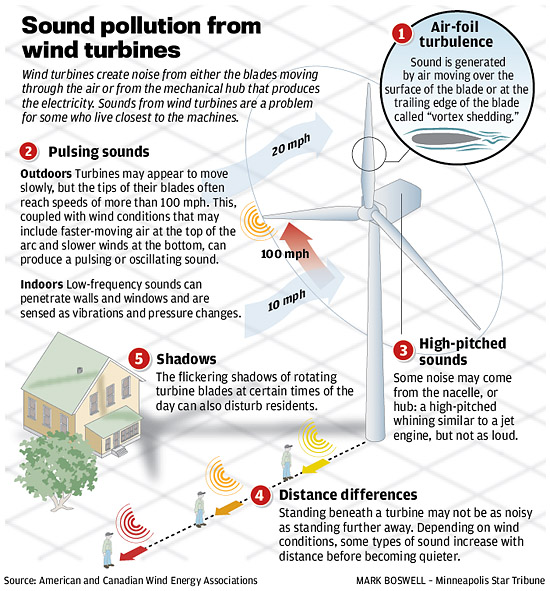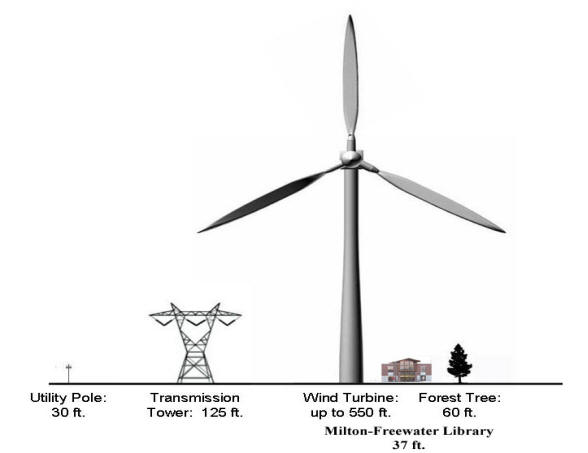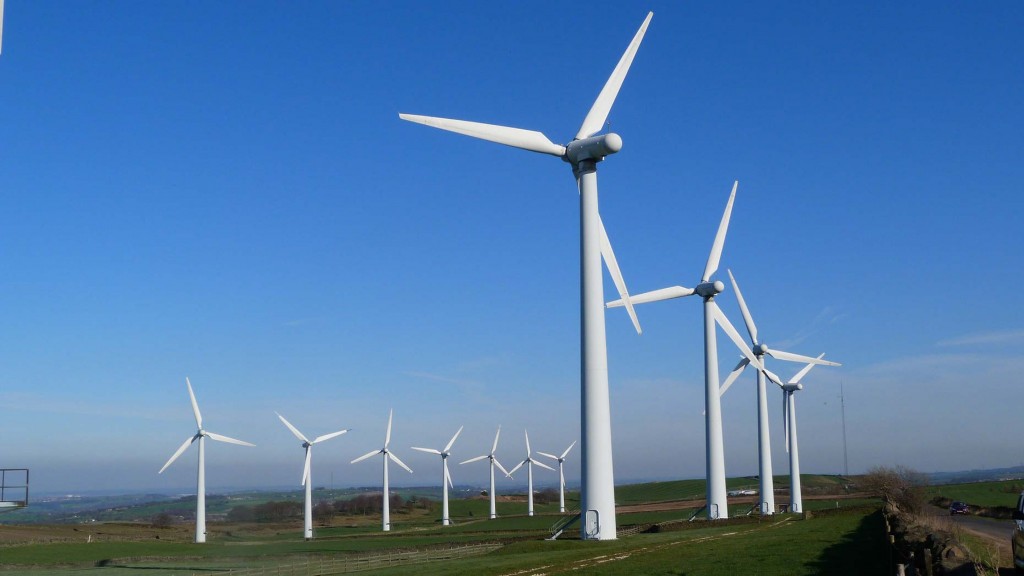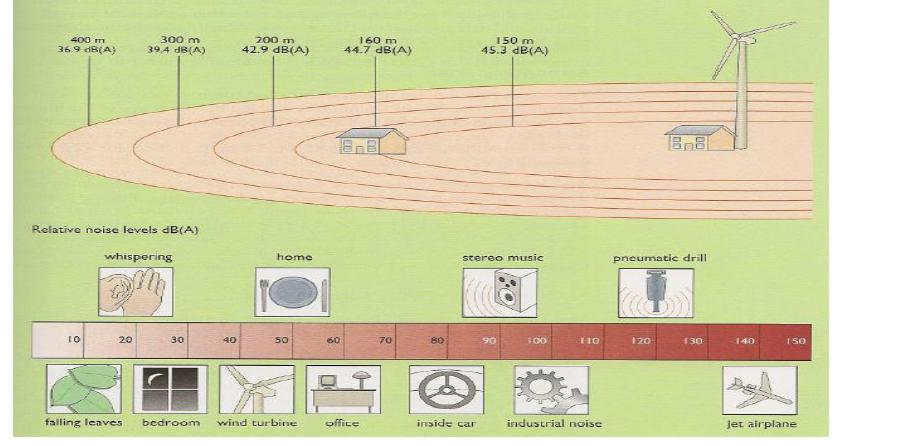There are several aspects of industrial wind turbines that can affect the quality of life of those living in the vicinity of a wind facility.
View Shed
Probably the most obvious impact of industrial wind turbines is their impact on the view shed. Since these turbines can be 500 feet tall (the height of a 50 story building) to the tip of their blades, they can be an imposing addition to any landscape. Some people say they like to see them, and others are dismayed by their presence in the landscape. As with many structures, the location of a wind facility is a significant factor on the distance from which they can be seen, as well as how they “fit in”. For example, would you like to see a line of turbines when looking at the Grand Canyon? Do you want to see them when you are at the beach? Do you want to see them from the Blue Ridge Parkway? The pictures below attempt to give some idea of how large these structures can be:
Noise
There have been many reports from people living in the vicinity of industrial wind turbines of adverse effects from noise, both audible and infrasound (which is low frequency sound that cannot be heard, but is registered by the nervous system and affect the body. The following diagram shows the sources of noise from a wind turbine:
While the loudness of a wind turbine at the nacelle (the part of the turbine to which the blades are attached, and where the electricity is generated by the rotation of mechanical parts) can be as loud as a jet engine, the sound levels decrease as you get farther away from the turbine. The following diagram provides an example of sound levels at various distances:
The following article provides a good description of the potential health impacts that can occur due to noise (both audible and infrasound) generated by industrial wind turbines: WHAT YOU NEED TO KNOW ABOUT THE HEALTH IMPACT
Shadow Flicker
Shadow flicker is caused by the rotation of the blades. Depending on the wind speed, the rate of flicker can be relatively slow, or quite fast.
The following video provides an excellent example of shadow flicker: https://www.youtube.com/watch?v=MbIe0iUtelQ
The following article from the Telegraph http://www.telegraph.co.uk/news/earth/earthnews/8386273/Shadow-flicker-rotating-blades-can-cause-headaches.html describes some aspects of flicker:
The scale of the problem depends on a number of factors such as wind speed and direction, the position and point of the sun and cloudiness.
It can be worse when the sun is low in the sky, at sunrise or sunset, or during the winter, which is also when there are faster wind speeds.
A report by the Department for Energy and Climate Change found that frequency of the flickering caused by the wind turbine rotation is such that it should not cause a significant risk to health.
However it cited one study that found in the long term it could “significant nuisance”. Campaigners claim that flicker causes extreme stress to people and can cause headaches.
There are also concerns that flicker causes a problem with certain grazing animals. It is claimed it can “spook” horses.




